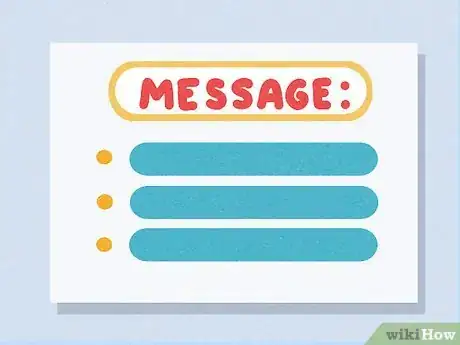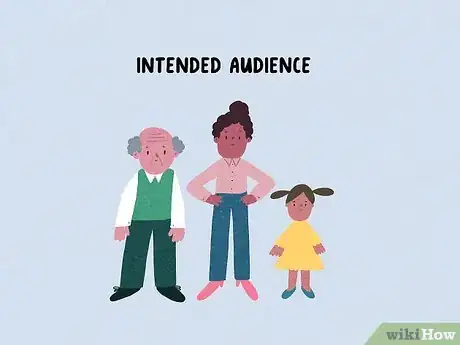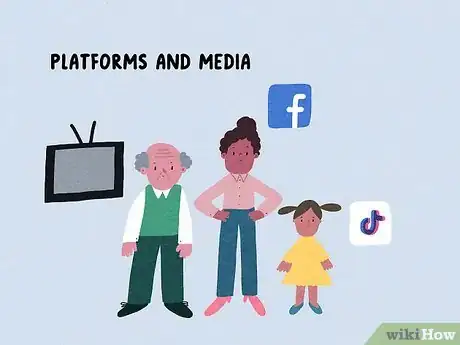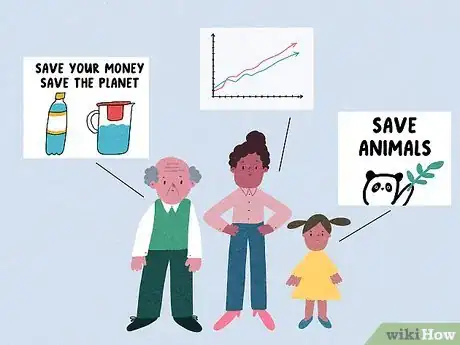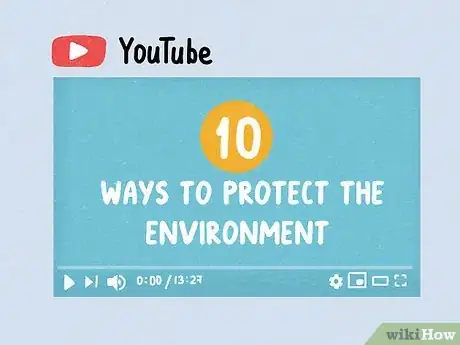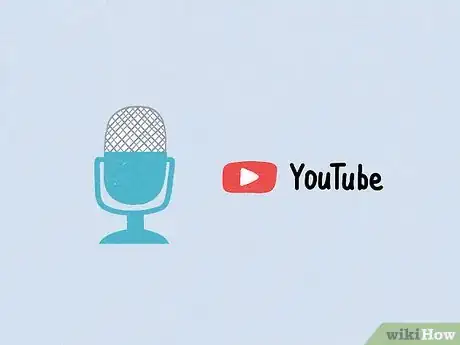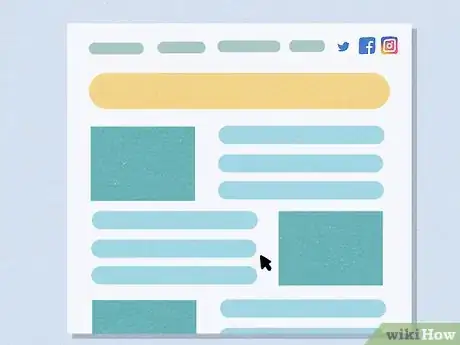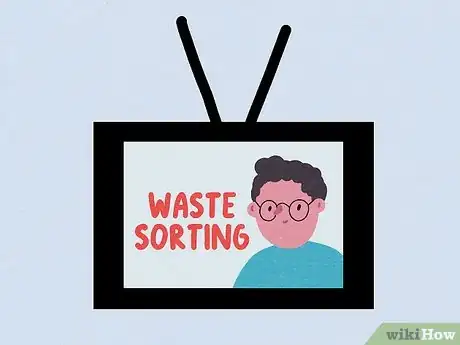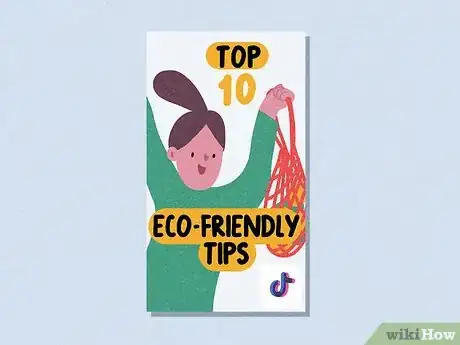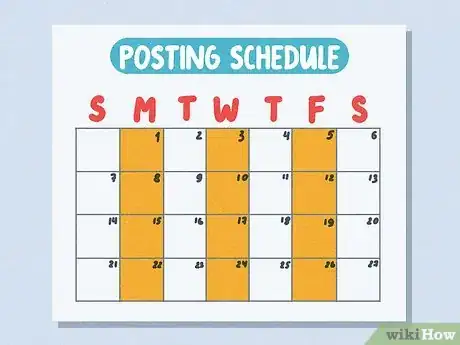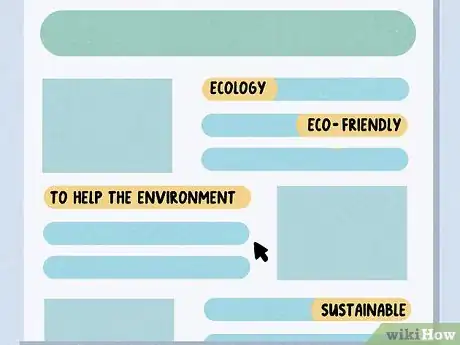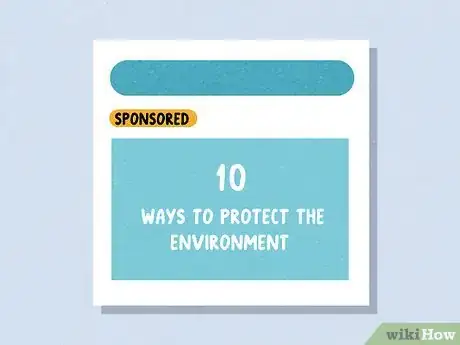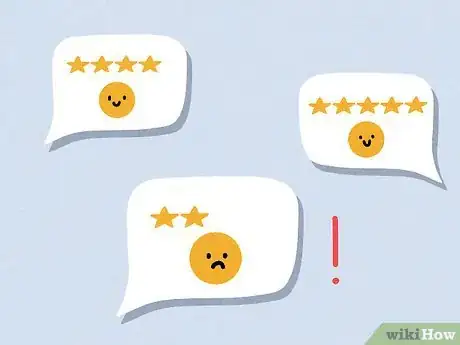This article was co-authored by Christine Michel Carter. Christine Michel Carter is a Global Marketing Expert, Best-Selling Author, and Strategy Consultant for Minority Woman Marketing, LLC. With over 13 years of experience, Christine specializes in strategic business and marketing consulting services including market analysis, organizational alignment, portfolio review, cultural accuracy, and brand and marketing review. She is also a speaker on millennial moms and black consumers. Christine holds a BS in Business Administration and Art History from Stevenson University. She is a leader in multicultural marketing strategy and has written over 100 articles views for several publications, including TIME and Forbes Women. Christine has worked with Fortune 500 clients such as Google, Walmart, and McDonald’s. She has been featured in The New York Times, BBC News, NBC, ABC, Fox, The Washington Post, Business Insider, and Today.
There are 17 references cited in this article, which can be found at the bottom of the page.
This article has been viewed 17,907 times.
Do you have a message that you want to share with the world? We'll help you learn strategies that you can use to spread the word and reach the masses!
Steps
Your Message and Audience
-
1Define the message or idea you want to spread. It’s tough to spread your message to the masses if you aren’t even sure what that message is. Before you start your outreach efforts, really brainstorm and hammer out your intended message. Whittle it down and connect all of your outreach efforts to that message.[1]
- A few short bullet points are great for your message. These are short, snappy, and easy for people to understand. If you want to spread a message about environmentalism, your points could be, "1) Climate change has accelerated over the last century 2) We've already seen the damage it can do in the world 3) We need to control climate change if we want our civilization to prosper."
- If you’re trying to get support for a policy, like environmental protection, try to come up with a handful of sentences on what you want your audience to know. You might want them to realize that conservation is important for preserving the planet.
- You might have to do some research to narrow down your topic. If you're trying to get support for a message, then you should be as informed as possible on it, so do any necessary research to educate yourself.[2]
-
2Lock onto your intended audience for your message. Your message might be great, but if you focus on the wrong audience, it might not take hold. Think about the ages, social groups, and demographics that you want to market your ideas to. Focus in on those groups for your marketing campaigns.[3]
- If you’re trying to build a following for yourself, then focusing on demographics most likely to agree with your message is important.
- Your intended audience doesn’t necessarily have to be people who already agree with you. If you want to reach a mass audience, then you’ll have to convince at least some critics to support you, so focusing on them could be a good first step.
- If you’re interested in environmental protection, then this is a deeply partisan issue, at least in the United States.[4] You’ll probably have to tailor your message to the people who don’t already support conservation efforts to try and convert them, so consider how you could get them on your side.
Advertisement -
3Define the platforms and media that your intended audience uses. Different audiences may consume different types of media, so it’s important to identify the media that your intended audience uses. There is plenty of data online about what types of media different social groups use most, so do a search to find the platforms you should be focusing on.[5]
- The age of your intended audience could impact which platforms you use. For example, if you’re trying to reach an older demographic, then traditional routes like radio or TV might work better, whereas a younger audience is more active on social media.
- Some networks are common to almost all demographics. Even grandparents use Facebook nowadays, so you can’t go wrong trying to advertise on this platform.
-
4Tailor your messages to connect with that audience. The most important thing you can do to gain an audience is produce messages and content that relates with people. Different audiences have different tastes and biases, so you’ll have to connect with those to get more influence. Plan out how you’ll connect with a diverse audience and adjust your message to relate with them.[6]
- For example a skeptic about environmental policies might be concerned that these regulations will hurt employment or the economy. You could present data showing the economic and job-creating potential of green energy to connect with that person.
- You can also tailor different messages intended for different audiences. You can produce one video for people who already agree with you, and one for people who you need to convince.
-
5Tell your audience about outcomes rather than the process. People tend to connect better when they think about results rather than long explanations. Try to talk about outcomes in the media you produce. This shows the audience what’s at stake or your intended results for your message.[7]
- For the environment example, it’s easy to spread messages about what will happen if the Earth’s environment isn’t protected. Conversely, you can also make messages about what’s possible if the planet is protected.
- This works with products too. If you're selling a health supplement, you could talk about the health benefits customers can enjoy if they use your product.
The Right Medium
-
1Make accounts on multiple major social media networks. If you want to truly reach the masses, then you’ll need a presence on as many networks as possible. Luckily, social media accounts are free, so these are very powerful platforms for spreading messages. It’s good to zero in on a few platforms that you know well and make accounts so you have a presence across multiple platforms.[8]
- The major choices are Facebook, Twitter, Instagram, LinkedIn, Pinterest, Reddit, Tik Tok, and Tumblr. There are also smaller sites that cater to more niche audiences.
- Try to focus on networks that your demographic tends to use. If you want to market to people above 50, then Tik Tok isn’t a good platform to use.
- Include links to your websites or other social networks on these pages too. That way, you’ll direct traffic to all of your pages.
-
2Make YouTube videos to engage your audience further. YouTube is one of the most popular websites in the world, and many people like watching videos more than reading posts. Making videos to talk about your message or advertise your brand makes you much more visible and can gain you a bigger audience. Even better, starting a channel is pretty easy. You just need a camera or webcam and some basic video editing skills that only take a few minutes to learn.[9]
- As a bonus, Google owns YouTube, so Google searches will make YouTube videos pop up early. This is great for SEO and visibility.
- You can also embed your YouTube videos on your website or social networks.
- If your YouTube channel gets a lot of attention, you could also earn money from ads running on your videos. This can be a key source of revenue.
-
3Start a podcast to tap into that market. Podcasts are exploding in popularity and a lot of people listen to them as a main source of entertainment and news. They give you an opportunity to talk at length about any issue you want, so you can really connect with your audience. The startup costs are pretty low and you only need a microphone, so it’s easy to get started.[10]
- To make less work for yourself, you can upload your podcast audio to YouTube. That way, you can cover both platforms without having to do double the work.
- Like with YouTube videos you can also earn money with ads on your podcast.
-
4Create a blog to create more long-form content. Blogs give you all the space you need to explain your ideas. This is especially useful if you have a political or marketing message to spread. Even better, starting a blog is very easy with a tool like WordPress or Wix. You just need to make a simple website and then start writing your content.[11]
- Remember to include links to all your other social networks on your blog. This drives traffic to all of your other sites.
- If your blog gets a lot of traffic, then you can also earn revenue from ads or affiliate marketing.
-
5Choose more traditional media if you have the money and audience. Radio, TV, and print aren’t as popular for advertising anymore, mostly because spreading messages on social media is significantly cheaper. However, some demographics, especially older age groups, consume this media more than internet media, so you’re missing out if you don’t try to tap into it. Try making TV, radio, or newspaper ads publicizing your message and directing traffic to your other platforms. This reaches a demographic that you might miss if you just stuck with internet marketing.[12]
- This type of advertising can be very expensive, so make sure you have a solid message and enough money first. That way, you’re in a good position to capitalize on traditional media.
-
6Tap into emerging social media networks to stay relevant. Social media changes fast and new networks pop up all the time. Keep an eye on the social media world so you can spot any up and coming networks. If something looks like it has potential, get in early to take advantage of it.
- Tik Tok, for example, shot up to almost 800 million users between 2018 and 2020.[13]
Viral Content
-
1Be consistent with your posting on all your networks. No matter what platform you use, consistency is key. Your audience will get bored and move on if you only post infrequently. Develop a schedule and aim for a few posts per week to keep your audience interested.[14]
- However, don’t post too often. Multiple posts a day might make people get tired of you.
- There are programs you can use to schedule posts on your social media pages. This way, you can plan out your posts and have them run automatically.
-
2Insert keywords into your content so it spreads better. Keywords are how content ranks in internet searches, so having the right keywords in your content helps it go viral. Do some research by searching for the topics you're covering and checking the main headlines or associated words that come up alongside that search term. Write these down and insert them into your content. This helps it rank higher in searches.[15]
- If you're writing about investing, some main associated terms are "passive income," "retirement," "financial freedom," and "net worth." Make sure to insert these into the content so it'll show up in more searches.
- You can do this for videos and podcasts too. On YouTube, you can add search keywords to your videos so they rank in internet searches.
-
3Add pictures to your posts to increase engagement. It’s well-known that posts with pictures get a lot more engagement than posts without them. This works on all platforms, from Facebook to Twitter to LinkedIn. Take advantage of this fact by adding images to all your posts.[16]
- Make sure the photos are relevant to the post. For environmental posts, images of forests and lakes would be relevant.
- If you’re skilled with design, you could make your own graphics to impress your audience even more.
-
4Buy social media ads to increase your reach. Organic shares can get you a lot of attention on social media, but your reach might still be limited. Luckily, most social media platforms allow you to pay for ads to get a larger audience. If you’re ready to take the next step and get more attention, put together some ads and run them on the platforms you use.[17]
- These ads could be for anything. They might link to a video of yours, your personal website, or an online store. It depends on what you want to draw attention to.
- Make sure you set a budget limit for your ads so you don’t spend more than you wanted to.
-
5Write articles for major publications to get more exposure. A well-placed article or guest post could get you a ton of free exposure. If you have a message to spread, try writing it up and submitting it to a major publication or website. If it’s accepted, then thousands of people could see it and start following you.[18]
- Remember to include your website or social media pages in your bio for these articles. That way, people can easily find you.
- Try to get written up in a publication that you know your audience reads. If you’re trying to connect with entrepreneurs, then some good outlets are Forbes or Inc.
-
6Use analytic programs to track your engagement and spread. You won’t know how much attention you’re getting if you don’t look at the data! Luckily, there are some simple programs you can use to see if your message is resonating with people and you’re actually reaching the masses.[19]
- Major social media sites like Facebook, YouTube, and Twitter have their own analytics tools to track engagement.
- If you have a personal website, you can link it to Google Analytics to keep track of your reach.
- Keep all of your data in one place so you can get a readout whenever you need it.
Connections
-
1Engage directly with your audience to build a following. If your audience interacts with you, interact back! This is the best way to keep them engaged and connected with your message. They’ll feel a personal connection with you and be more motivated to support you.[20]
- The simplest way to do this is interact with their comments on your social media posts. Thank them for the engagement and answer any questions they might ask.
- You might also get fan emails. Do your best to respond to these to keep your audience engaged.
-
2Make appearances or announcements at larger events. Don’t be shy about taking advantage of marketing opportunities at large events. For example, if there is a local fair or corporate event, try to get yourself in as a presenter. All of the attendees here are potential supporters, so do your best to get them on your side with your presentations.[21]
- Do your best to make sure these events are related to your message and audience. If you're advertising a new social media platform, for example, then giving presentations to older audiences probably won't work as well. Stick with events with a younger crowd, like concerts or music festivals.
- Remember to plug all of your websites or social networks during your presentations so people know how to find you.
-
3Collaborate with larger influencers to spread your brand. There are tons of people online with huge followings that can really boost your influence. If there is an influencer with a follower in the audience you’re trying to connect with, try reaching out and asking if they’ll share some of your content.[22]
- Don’t be pushy when you contact influencers. Just say you think their audiences would like your content and you’d appreciate a share or shoutout.
- Be willing to boost other influencers too. People will be more likely to help you if you’re someone who helps support others in your network.
-
4Accept feedback from your audience or partners. Unfortunately, not all of the feedback you get will be positive. This is normal, especially if you’re just starting out. Some criticism might actually be good for you, since it can help you change your strategy and make it better. If you’re receiving constructive criticism, take that to heart and make positive changes.[23]
- Be especially open to constructive feedback from your audience. This is your main source of support, so keeping them happy is important.
- Remember that some comments might just be trolling or bad faith criticism. Don’t pay attention to these comments. Only listen to the feedback that’s constructive.
Warnings
- Follow all of the rules on each site or platform you use. If you violate the terms of service, you could get banned and cut off from your audience.⧼thumbs_response⧽
- If you're advertising a product, don't make any false or misleading claims. This is not only bad for business, but you could end up with a legal problem on your hands too.⧼thumbs_response⧽
References
- ↑ http://www.ifm-sei.org/files/up/how-to-spread-your-message-online-.pdfF
- ↑ Christine Michel Carter. Global Marketing Expert. Expert Interview. 30 September 2020.
- ↑ https://www.forbes.com/sites/steveolenski/2018/02/06/7-ways-to-up-your-chances-of-going-viral-on-social-media/#4a34688917af
- ↑ https://www.pewresearch.org/fact-tank/2017/04/20/for-earth-day-heres-how-americans-view-environmental-issues/
- ↑ http://www.ifm-sei.org/files/up/how-to-spread-your-message-online-.pdf
- ↑ https://econsultancy.com/five-mass-audience-strategy-tips-for-content-marketers/
- ↑ https://ssir.org/articles/entry/six_ways_to_boost_public_support_for_prevention_based_policy
- ↑ https://www.entrepreneur.com/article/234739
- ↑ https://www.thebalancesmb.com/how-to-use-youtube-to-market-your-business-4159318
- ↑ https://www.npr.org/2018/11/15/662070097/starting-your-podcast-a-guide-for-students
- ↑ https://www.thebalancesmb.com/blog-marketing-1794404
- ↑ https://www.entrepreneur.com/article/65242
- ↑ https://www.cnbc.com/2020/08/24/tiktok-reveals-us-global-user-growth-numbers-for-first-time.html
- ↑ https://www.entrepreneur.com/article/235129
- ↑ https://www.inc.com/jeff-haden/how-to-create-great-content-a-step-by-step-guide-to-content-marketing-that-delivers-real-results.html
- ↑ https://www.entrepreneur.com/article/235129
- ↑ https://www.inc.com/young-entrepreneur-council/how-to-reach-your-target-audience-on-social-media-more-effectively.html
- ↑ https://er.educause.edu/blogs/2019/12/how-to-reach-the-masses-budget-friendly-ways-to-do-outreach-at-large-institutions
- ↑ https://www.inc.com/young-entrepreneur-council/how-to-reach-your-target-audience-on-social-media-more-effectively.html
- ↑ https://www.entrepreneur.com/article/235129
- ↑ https://er.educause.edu/blogs/2019/12/how-to-reach-the-masses-budget-friendly-ways-to-do-outreach-at-large-institutions
- ↑ https://www.forbes.com/sites/steveolenski/2018/02/06/7-ways-to-up-your-chances-of-going-viral-on-social-media/#4a34688917af
- ↑ https://econsultancy.com/five-mass-audience-strategy-tips-for-content-marketers/
About This Article
If you’re trying to reach the masses, it’s important to define your message first. Take time to decide exactly what it is you’re trying to tell people, and why. You’ll also need to determine who your audience is. For instance, are they people of a particular age group or with certain types of interests? Once you know who you’re trying to reach, research the platforms your audience is mostly likely to pay attention to. For instance, an older audience is more likely to watch TV or read magazines, while you might reach a younger demographic more easily through social media. It’s also important to share your message in a way that will be meaningful for your audience. For instance, if you want to sell a product to parents, focus on describing how your product will help their kids or make their daily lives easier. To learn how to choose the right medium for your message, scroll down!
